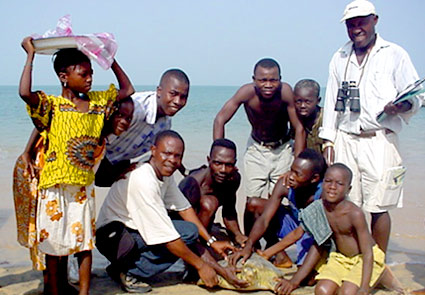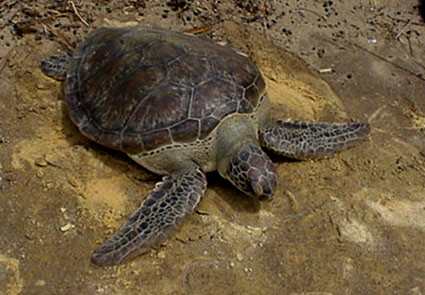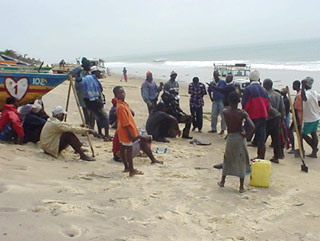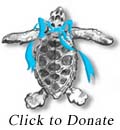 | ||||||||||||||||||
| 
Located in West Africa, Sierra Leone borders the North Atlantic Ocean between the countries of Guinea and Liberia. The coastline stretches for approximately 402 km encompassing over 70 coastal communities. The country's 6 million people speak English, Mend, Temne, and Krio, an English-based Creole spoken by the descendants of freed Jamaican slaves who were settled in the Freetown area.  Under the guidance of the CSSL, Mr. Aruna documented that five species are present in Sierra Leone's coastal waters. Threats that face this turtle population include collection of turtles and eggs as a food source, collection of carapaces for ornaments, sand mining, recreational vehicles on beaches, and construction on nesting beaches. After successfully completing his degree program, Mr. Aruna continued to voluntarily work on the sea turtle conservation project at the CSSL. Eventually, the Sea Turtle Conservation Program (STCP) hired Aruna as their Program Officer.  There are three staff members of STCP, including Mr. Aruna. These individuals are working towards protecting sea turtles in all Sierra Leone coastal communities. Project goals include education, community development, community participation in conservation, protection and research activities, and the establishment of a long term data collection and monitoring program.  Community education and awareness programs will be broadcast via television and radio explaining the country's position on sea turtle conservation and it's importance on a global scale. Community development plans include provisions for community gardening areas. These will provide incentives for protecting nesting sites and assistance with developing income generating alternatives to sea turtle capture. Community task force leaders will help clean up nesting beaches, collect data, and care for the hatcheries. They will also help enforce compliance with local conservation laws, oversee community development plans, and motivate other community members in sea turtle conservation efforts.  The World Turtle Trust applauds the efforts and goals of the Conservation Society of Sierra Leone and hopes that you will join us whole-heartedly in your support by making a generous donation to this project.  learning about sea turtle conservation.
| |||||||||||||||||
| ||||||||||||||||||









